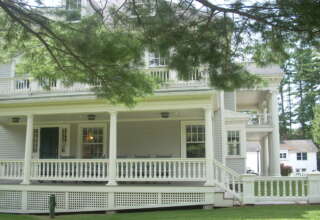
For those of us who were born in the 1940s and grew up watching Gordon McRae and Doris Day on the big screen and “I Love Lucy” or “My Little Margie” on the smaller television screen, a slightly different version of the perfect or at least sustainable relationship was portrayed— though during both the 40s and 50s we find an emphasis on “Father Knows Best” (though often in Dagwoodian fashion only thinks that he knows best) and on the woman as dependent and supportive of the male ego and initiative. We found the beginnings of a Hollywood-based image of women as independent (building on the models first offered by Mae West, Katherine Hepburn and, on occasion, Greta Garbo during the 1940s).
The 1960s say a quite different image of the perfect relationship. Movies such as “The Apartment,” “Hud” and “Easy Rider” portrayed short term relationships that were intimate but never quite satisfactory, while other popular movies such as “The Graduate” and “Midnight Cowboy” explored intimate relationships that could by no traditional standards be called “ordinary.” Not only does the “anti-hero” gain visibility in the movies of the 1960s, but the “anti- relationship” (the “couple from hell”) also gains credibility — sometimes as a problem to be addressed, but other times as a new type of relationship to be emulated. Marriages were no longer made in heaven, nor did the contract read: “until death do us part.” People were supposed to stay together as long as they still loved each other, and young men and women were to explore intimacy before settling down to monogamy if they were to be successful as a sexual partner and if they were to know “what they were getting into” when they married that perfect boy (or girl) next door.
While television, as the new medium of the 1950s and 1960s, tended to still portray the nuclear family in very traditional terms (doting housewife and mother, 2.5 kids, and a bread-winning father and loving husband), people seemed to view these programs in wistful terms and looked at them for comic relief rather than for any penetrating view into the new 21st Century couple.
Movies also offered comic relief, yet marriage often was the butt of the jokes in American film, and the “odd couple” was found not just in a bachelor apartment but also many late 20th Century homes.
We propose that the images established during our childhood reinforced by the dominant media of the time as well as our own parents and other significant adult figures in our lives continue to hold a powerful, though often unacknowledged or even unconscious, hold on our lives. At some very deep level we look for the perfect relationship as it is defined by this old image, and are often depressed, angry or discouraged when we find that our own significant relationships fail to match or even come close to matching this image. We also tend to get quite confused when we inevitably mix together images of perfect relationships that come from different eras.






